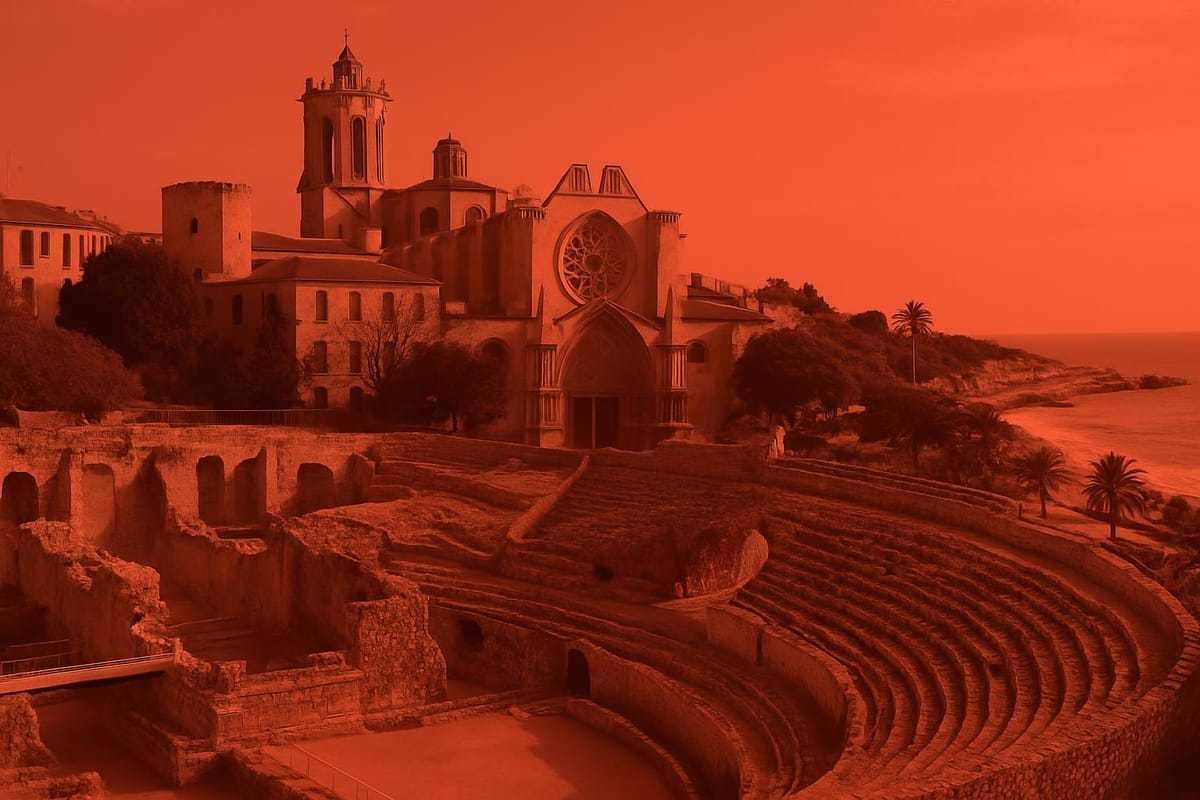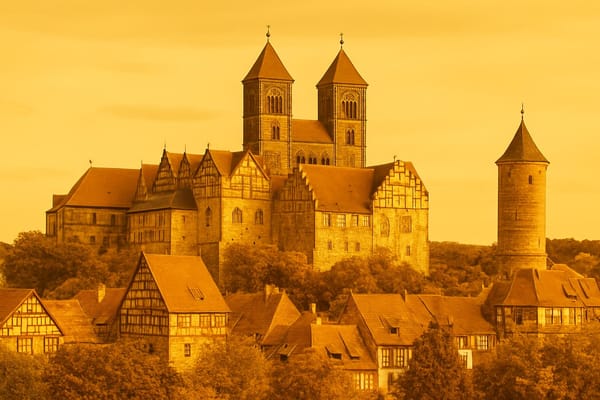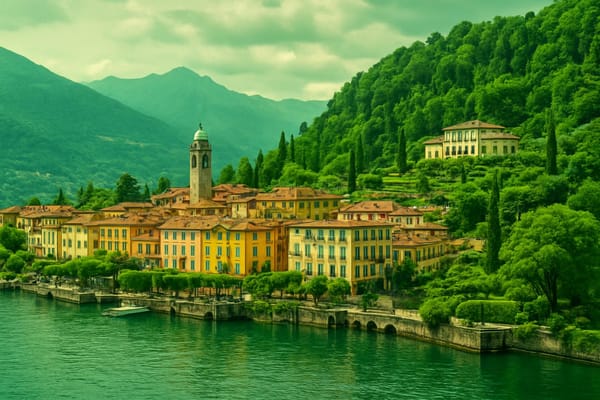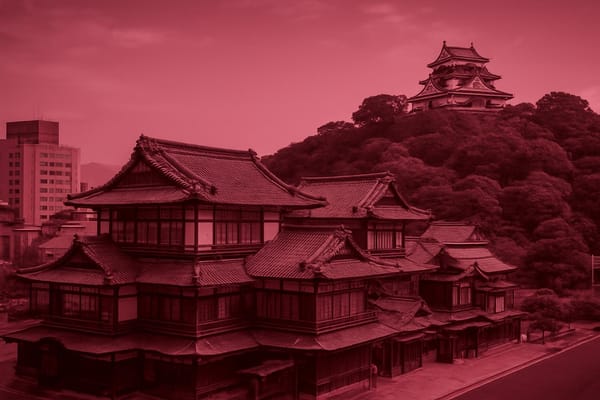Tarragona
Discover ancient Roman ruins, sun-kissed Mediterranean beaches, and a charming historic port.

Important things to know about Tarragona
Tarragona, Spain, is a coastal city in Catalonia where the meeting of modern urban life and deep-rooted history shapes a distinctive Mediterranean identity; its streets reflect layers of culture from local Catalan traditions to contemporary creative scenes, while the everyday rhythm is marked by lively markets, neighborhood cafés, and a strong sense of community that blends residential calm with dynamic economic activity. As a provincial capital, Tarragona supports a diverse economy that includes maritime commerce, agriculture from the surrounding plains, and a growing services and technology sector, all framed by a mild seaside climate that encourages outdoor living and culinary richness; the local gastronomy emphasizes fresh seafood, seasonal produce, and convivial dining customs that are central to social life. Educational institutions and cultural centers contribute to a steady flow of students and professionals, fostering innovation and preserving linguistic heritage with both Catalan and Spanish commonly heard in daily conversation. Urban planning balances preservation with renewal, offering walkable neighborhoods, waterfront promenades, and pockets of green space that enhance quality of life for families and young professionals alike. Transportation links connect Tarragona to larger metropolitan areas while preserving its distinct regional character, and local festivals, artisan markets, and a thriving arts community regularly animate public life without compromising residential tranquility. For anyone researching Tarragona, Spain as a place to live, work, or study, the city presents a compelling combination of Mediterranean lifestyle, robust infrastructure, cultural continuity, and evolving economic opportunity.
Sightseeing hot-spots in Tarragona
Tarragona is a sun-soaked coastal city in Catalonia, Spain, whose rich past is visible at every turn. Visitors seeking memorable sightseeing will be drawn to the dramatic Roman legacy that made the city famous: the Roman amphitheater perched above the sea, ancient walls and an extensive archaeological ensemble that whisper of emperors and ancient trade. As a designated heritage area, Tarragona blends history and modern life, offering panoramic views over the Mediterranean and photographic corners for every traveler interested in Tarragona attractions and Roman ruins.
Wandering through the compact Old Town reveals narrow lanes, medieval squares and the imposing Tarragona Cathedral, whose mix of architectural styles traces centuries of devotion. The National Archaeological Museum and sections of the city’s Roman circus and forum let you piece together the city’s urban fabric, while the Passeig Arqueològic follows the old fortifications for breathtaking seaside vistas. For anyone researching things to do in Tarragona, these cultural stops rank high: they are easy to reach on foot and reward slow exploration with hidden courtyards, ancient stonework and historic eateries tucked into the lanes.
Beyond history, Tarragona’s charm continues along palm-lined promenades and golden beaches where locals and visitors relax under the sun. Rambla Nova and the Balcó del Mediterrani offer lively atmosphere and sweeping sea views, and seasonal events-from colorful festivals to the dramatic human towers or castells-bring local tradition to life. Culinary delights of fresh seafood and Catalan tapas complete the experience, making Tarragona a well-rounded destination for sightseeing in Spain that satisfies history lovers, beachgoers and food enthusiasts alike.
Hotels to enjoy in Tarragona
Hotels in Tarragona offer a rich blend of seaside relaxation and cultural discovery, making the city a top choice for travelers exploring the Costa Dorada. Whether you seek beachfront views, proximity to the historic Roman ruins, or modern comforts for business travel, Tarragona’s accommodations cater to diverse needs. Many Tarragona hotels are housed in charming historic buildings around the historic center, steps from the cathedral and amphitheatre, while others line the promenade for easy access to sandy beaches. Guests often look for amenities like free Wi‑Fi, on-site parking, breakfast included, and pet-friendly rooms; these features are widely available across budget and boutique options. Search-friendly phrases such as accommodation in Tarragona and hotels near Tarragona Roman amphitheatre will surface properties ranging from cheap hotels ideal for backpackers to luxury hotels that pamper with spa services and rooftop terraces.
Choosing where to stay in Tarragona depends on whether you prefer cultural immersion or coastal relaxation, and reviews frequently highlight friendly staff, clean rooms, and convenient transport connections to Barcelona and nearby vineyards. For families, family-friendly hotels with larger rooms and pools are plentiful, while solo travelers and couples often select small boutique hotels for personalized service and local charm. Seasonal events and festivals make booking ahead important, and searching with terms like best hotels in Tarragona and Tarragona accommodation deals improves chances of finding competitive rates. With a pleasing mix of history, gastronomy, and sun, Tarragona’s hotel scene is well optimized for travelers seeking both authenticity and comfort.
Restaurants to try in Tarragona
Tarragona's restaurant scene is a delightful blend of historic charm and contemporary flavors, centered around the Rambla Nova, the old port, and the stone streets of the historic center. Visitors searching for the best restaurants in Tarragona will find everything from traditional taverns serving classic Catalan cuisine to modern establishments focused on innovative Mediterranean tasting menus. The proximity to the Costa Dorada means that seafood is a defining feature of local menus: fresh fish, grilled prawns, and rice dishes like paella and arroz caldoso dominate many tables, often accompanied by regional wines from the DO Tarragona. Strolling past Roman ruins and seaside promenades, diners can choose between casual tapas bars, elegant dining rooms with sea views, and family-run bodegas where recipes have been passed down for generations.
The flavors of Tarragona are marked by bold sauces such as romesco, coastal ingredients like mussels and cuttlefish, and comforting staples like xató and seasonal vegetable preparations. For those optimizing their travel plans, focusing searches on phrases like Tarragona restaurants and Tarragona dining can uncover top-rated spots, chef-driven kitchens, and hidden gems favored by locals. Service often reflects a warm, unhurried Mediterranean pace, and many eateries pair thoughtfully curated wine lists with menu items that highlight local produce. Whether you are after an authentic tasting experience, a romantic dinner overlooking the harbor, or lively small plates while enjoying a glass of local wine, Tarragona offers a compelling culinary journey that rewards both food lovers and casual travelers alike.
Best shopping stops in Tarragona
Tarragona is a delightful destination for shopping enthusiasts looking to combine culture with commerce; the shopping highlights of Tarragona range from bustling streets to hidden artisan corners. Stroll down Rambla Nova and you’ll find a mix of well-known brands and independent boutiques showcasing Mediterranean style, while the historic centre offers narrow lanes full of vintage finds, antiques and designer ateliers. Food lovers should not miss the Mercat Central, where stalls overflow with fresh seafood, local cheeses, olives and cured meats-perfect for discovering authentic Catalan flavors. Along the waterfront and in neighborhoods like El Serrallo, specialty gastronomy shops and delicatessens stock regional products such as vermouth, cava and artisanal olive oil, making shopping in Tarragona an experience that celebrates both fashion and flavor.
Beyond souvenirs and fashion, Tarragona’s retail scene is notable for its variety of artisan products, from handmade ceramics to contemporary jewelry, and for welcoming independent creators whose unique wares are ideal for memorable gifts. Seasonal markets and occasional craft fairs add vibrant energy to the city, and many stores combine traditional craftsmanship with modern design, appealing to shoppers seeking something original. Practical tips for enjoying Tarragona shopping include exploring side streets for hidden gems, visiting markets in the morning for the freshest produce, and leaving time to enjoy a café stop-after all, part of the Tarragona shopping experience is savoring the Mediterranean lifestyle that shapes the city’s flavors, fashion and flair.
Nightlife highlights in Tarragona
Tarragona's nightlife highlights blend historic charm with modern energy, making Tarragona nightlife an appealing draw for visitors and locals alike. As evening falls, the Old Town and Rambla Nova fill with the hum of conversations spilling out of tapas bars and cozy wine taverns where you can savor Catalan plates before a night out. The juxtaposition of Roman ruins and contemporary venues gives the city a unique vibe - stroll past ancient walls toward the seafront and the Port to catch a spectacular sunset before heading to a bar with a terrace. You'll find options for intimate evenings in wine bars as well as lively plazas where live performers set the tempo, so whether you're after a relaxed drink or a bustling scene, the variety keeps Tarragona's nights interesting.
After midnight, the city switches up with an array of live music venues, clubs and cocktail bars, and seasonal beach clubs that host DJs and themed parties well into the early hours. The student population and visitors create a diverse crowd, meaning you can hop from a jazz night to an electronic set without leaving the downtown area. Good public transport and taxi services make bar-hopping easy, while local festivals and summer concerts often amplify the nightlife, showcasing why Tarragona is a top spot for memorable night outings in Catalonia.
Getting around in Tarragona
Tarragona’s airport and train situation makes it a well-connected destination on the Costa Daurada, with Reus Airport serving many low-cost and seasonal flights just a short drive from the city and Barcelona–El Prat providing the main international gateway within about an hour by car; travelers can reach Tarragona by shuttle bus, taxi or rental car from Reus and by train or bus from Barcelona airport, giving flexible options for arrivals. On the rail side, RENFE operates regular regional and medium-distance services, including Rodalies connections to Barcelona and onwards, while the high-speed network calls at Camp de Tarragona (the nearest AVE/Avant stop), offering faster links for those willing to transfer into the city center by taxi or local bus. For visitors and commuters alike the mix of regional trains, occasional AVE services nearby and airport shuttles supports both tourism and business travel, and ongoing local transport coordination aims to improve public transport links, schedules and signage so that getting between Tarragona, Reus, Barcelona and the wider Catalonia rail and flight networks is increasingly seamless for searchers planning trips to this historic Mediterranean city.
Culture must-see's in Tarragona
Tarragona, a coastal jewel in Catalonia, blends centuries of history with vibrant modern life, and its culture highlights are anchored in spectacular Roman ruins and living traditions. Dominating the skyline, the Roman Amphitheatre and the nearby Roman Circus offer tangible links to the city’s ancient past, while the Cathedral sits above narrow medieval streets that lead to the Mediterranean Balcony, a sweeping viewpoint over the sea. Museums such as the National Archaeological Museum of Tarragona amplify the story, displaying mosaics, artifacts and ruins that make Tarragona Spain a top destination for lovers of history and architecture. Strolling through the Old Town, visitors sense how Roman heritage and Catalan identity intertwine in stonework, plazas and local storytelling.
Beyond monuments, Tarragona’s cultural calendar and gastronomy bring the city to life: the annual Santa Tecla Festival and the world-famous castells (human towers) showcase communal spirit and performance rooted in Catalan tradition. Food culture centers on fresh seafood, Mediterranean flavors and tapas that reflect the regional produce and coastal location, making Tarragona a culinary highlight in Tarragona Spain travel guides. Contemporary art spaces, music venues and lively markets add modern layers to the historic setting, ensuring that the cultural experience is both diverse and authentic. Whether exploring archaeological sites, attending a festival, or savoring Catalan cuisine, the culture highlights of Tarragona reveal a city where past and present meet along the Mediterranean.
History of Tarragona
Tarragona's story stretches back millennia, and the history of Tarragona is a vivid tapestry woven from Ancient Tarraco, Roman legions, medieval trade, and modern Catalan culture. Founded as a strategically important Mediterranean port, Tarragona Spain became the capital of the Roman province of Hispania Citerior, later known simply as Tarraco, and developed monumental public works that still define the cityscape: the Roman amphitheatre, imperial forums, aqueducts, and a vast network of Roman walls. These archaeological treasures, uncovered in successive excavations, underpin Tarragona’s reputation as one of Spain’s richest classical sites and helped secure its designation as a UNESCO World Heritage Site. Over centuries, the city endured Visigothic rule, Moorish influence, and the Reconquista, each era leaving architectural and cultural imprints visible in the layered urban fabric. Scholars and visitors alike are drawn by the city’s ability to narrate Roman Tarragona alongside later medieval churches and Baroque palaces, making it an exceptional case study in continuity and adaptation on the Iberian Peninsula.
The medieval and modern chapters of Tarragona’s past emphasize its role as a regional power and commercial hub within Catalonia. During the Middle Ages the Cathedral of Tarragona rose atop Roman foundations, symbolically linking Christian and classical legacies; maritime trade fostered prosperity while periodic conflict reshaped civic identity. The 18th and 19th centuries introduced new industry and urban expansion, but Tarragona retained a strong connection to its antiquity through museums, preservation efforts, and a thriving archaeological community. Today, tourism, cultural festivals, and academic research sustain local economies and global interest, and the city’s Roman relics continue to inform contemporary urban planning and heritage management. For anyone exploring the history of Tarragona, the city offers a layered narrative where ancient Tarraco and modern life coexist, making Tarragona not only a destination for history enthusiasts but also a living example of historical resilience and cultural synthesis on Spain’s Mediterranean coast.



